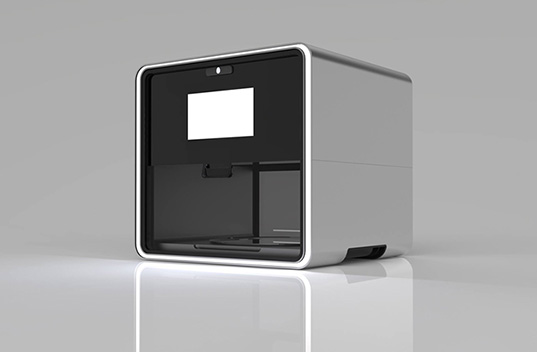3D Printing Enters the Kitchen with Foodini

The Foodini is the first commercially available 3D printer for the kitchen. Courtesy of Natural Machines.
Latest News
December 12, 2013
Everyone loves Christmas cookies. Whole doughy herds of reindeer go into the oven, along with enough stars to fill the night sky and give Santa diabetes. For some people, baking Christmas cookies is part of the holiday tradition they look forward to. For others, it’s simply another chore associated with the holidays. Mixing the dough, rolling the dough, cutting the dough. Ugh.
What those folks really want for Christmas is some sort of machine that speeds up production. No, not a mixer. How about a 3D printer for the kitchen? The Foodini is here to save your dough-covered hands. The first commercially available additive manufacturing (AM) system for food preparation can make cookies in almost any shape imaginable, in a large variety of flavors.

The Foodini comes from a Barcelona company named Natural Machines that is so new its website isn’t much more than a messaging service. In addition to cookies, the company says the 3D printer can also build ravioli, vegetarian burgers, pastries and, yeah, pizza. I’m not sure why pizza is the pièce de résistance for AM-created food, but it’s a fact.
The new kitchen aid is said to work just like other 3D printers. It lays down your object (food) a layer a time until that particular dinner item is complete, then moves on to the next object. At this point the Foodini can only print in one material at a time, so you have to prepare your meals in order, like a production line. Said materials are mixed together and kept in tubes before being snapped into place in the Foodini.
Somewhat unusual or no, the Foodini is still an AM system, and so can produce food in a variety of shapes. How well those shapes hold up in the oven is another matter, but we’re pretty early in the whole Star Trek replicator kind of food production dream here. It does allow you to mix flavors together (assuming they fit in the tubes) to try out different recipes, but whatever you put in those tubes will need to be smooth enough to come out of an extruder head.

Beyond selling the Foodini itself (which runs for around $1,400), the company is considering selling meals specifically designed to work with their new system. Instead of having to blend the ingredients yourself, customers could simply receive meal tubes (yum?) in the mail, plug them into the Foodini for construction, and then bake the result. If nothing else, these pre-made meals would still probably be healthier for you than a microwave dinner. Or too many Christmas cookies.
Below you’ll find a video about the Foodini.
Source: Daily Mail
Subscribe to our FREE magazine, FREE email newsletters or both!
Latest News
About the Author
John NewmanJohn Newman is a Digital Engineering contributor who focuses on 3D printing. Contact him via [email protected] and read his posts on Rapid Ready Technology.
Follow DE





